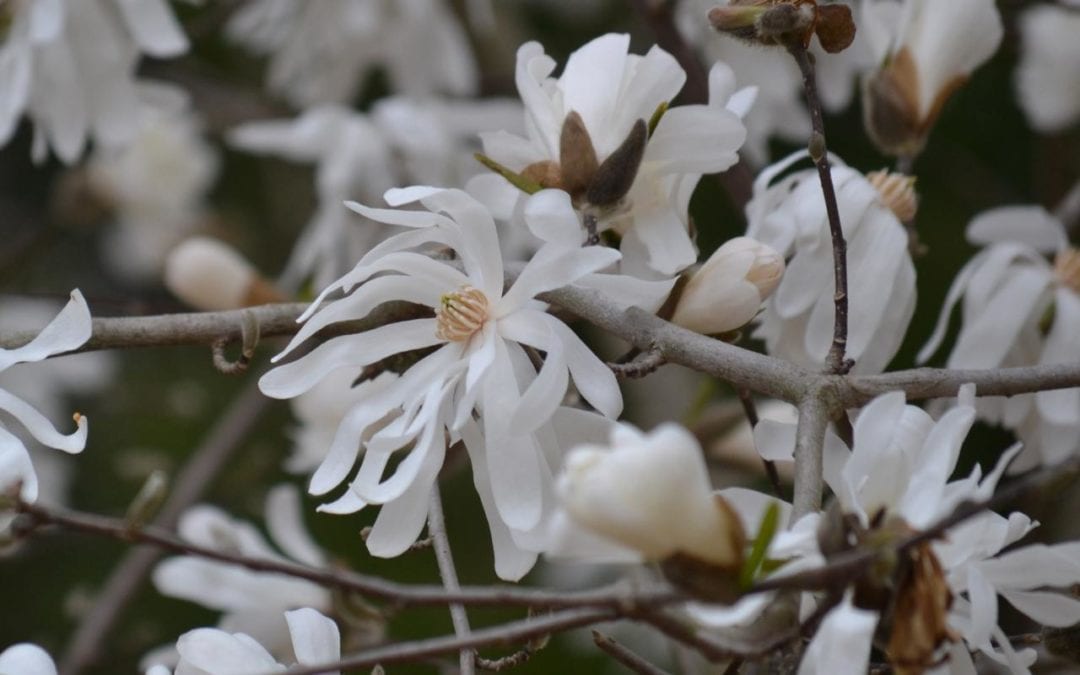By: Lisa Briggs | April 19th, 2019
About this time of year, each morning before I get into the car to drive to work, I walk through my front garden in to discover what has popped up during the night. Let’s see. Yesterday there were 10 Hosta spearing through the newly spread mulch. But today, there are 15! Look, the Epimedium are unfurling. And in the evening I check out the progress of buds. Will I get more Magnolia flowers this spring than last? How far along are my Japanese Maples? In spring, every day brings another gift.
The weather can be fickle this time of year, but I can stand it knowing that the merry month of May is not far away. And I often measure the march of spring by the sequence of flowering shrubs. Sequence of bloom, also called successional interest, is a term used by gardeners and designers to refer to the time periods when different plants strut their stuff. I like successional interest better, as plants can display characteristics other than flowering, but for the purposes of this blog, we’ll be concentrating on bloom sequence.
Many factors impact when a particular tree or shrub will flower. Soil Temperature and day length are a couple. But the most interesting one is the accumulation of growing degree days, or units. GDDs are a pretty reliable way to predict the development of both flora and fauna. Development of both speeds up as the temperatures rise and slows when the weather is cooler. You can anticipate the flowering of a shrub or the emergence of an insect by calculating the accumulated GDDs.
So this is how it works. You start adding together the maximum and minimum temperature for any given day. Then divide by 2 to get the average. Now subtract 50. 50 degrees is the temperature under which no significant plant development is expected. Any positive result is degree-day accumulation. For instance, the high temp on April 8th was 73 degrees while the low was 39. Adding them together and dividing by 2 equals 56. Subtract that 50 degree base and you end up with 6. So even though it was a glorious day, only 6-degree units were accumulated. As of yesterday, we’ve at 72. Average for this time of year is 55.
Mostly it’s just fun to watch the progress of blossoms. But knowing that Redbuds will begin to bloom around 225 GDDs, which coincidently is the same time that Zimmerman Pine Sawfly larvae are chowing down on your Mugo Pines. Finding and exploiting these correlations is called phenology, and since neither plants nor animals recognize the human calendar, it’s a super handy way of planning your pesticide applications. If you can find it, there is a great book called Coincide written by Donald Orton. His treatise lists a lot of these relationships. I’m sure that it’s out of print, but what better way to use the internet.
There’s always a day, usually around the time the PJM Rhododendron are blooming, when I amuse myself by reciting the spring bloom sequence as I drive around the area. Forsythia. Star Magnolia. Ornamental Pear. Redbud. Common Lilac. I would whole-heartedly agree that this is geeky, but we all have our own head games. I can also sing the states.


